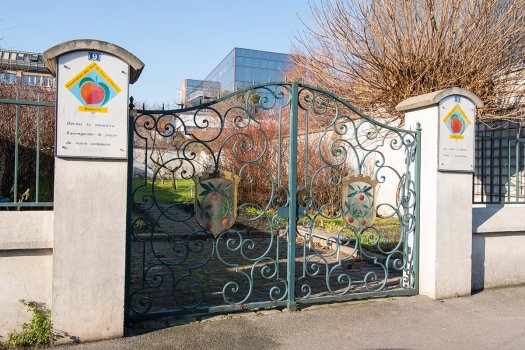
In 1993, the "Amis du clos à pêches de Bagnolet" association restored an old agricultural plot in the heart of Bagnolet, on rue Charles Graindorge. These enthusiasts planted the first fruit trees in 1994.
The Clos à pêches on rue Charles Graindorge is the only one to have survived in the town of Bagnolet. Thanks to the work of the association, this small vineyard bears witness to fruit growing in Seine-Saint-Denis. The walls, reassembled by these enthusiasts, show how the peaches, apples and pears for which Bagnolet is famous were grown 300 years ago.
In the past, a large part of Bagnolet's territory was covered with peach orchards, vineyards and fields. Over the centuries, Bagnolet growers developed and perfected the technique known as espalier cultivation and trellising. Trees are planted along stone walls covered with plaster, and their branches are spread out and fixed to these walls so that each branch receives the sun's rays. This technique made it possible to grow Mediterranean fruits (such as peaches) in the Paris region.
The arrival of the railroads and the impoverishment of the soil led to the decline of this activity towards the end of the 19th century. The clos were used to grow other trees such as apples, but also flowers. Little by little, they were abandoned or subdivided, leaving their mark on the Bagnoletais landscape: long, narrow plots.
Today, in the restored clos on rue Graindorge, you'll find a wide variety of peach trees, as well as apple trees, vines and fig trees.
You can visit the clos à pêches de Bagnolet and meet members of the association during the Journées du Patrimoine de Bagnolet.
Bagnolet's neighbor Montreuil has also preserved some of its peach orchards.
Visit Bagnolet: what to see, what to do?